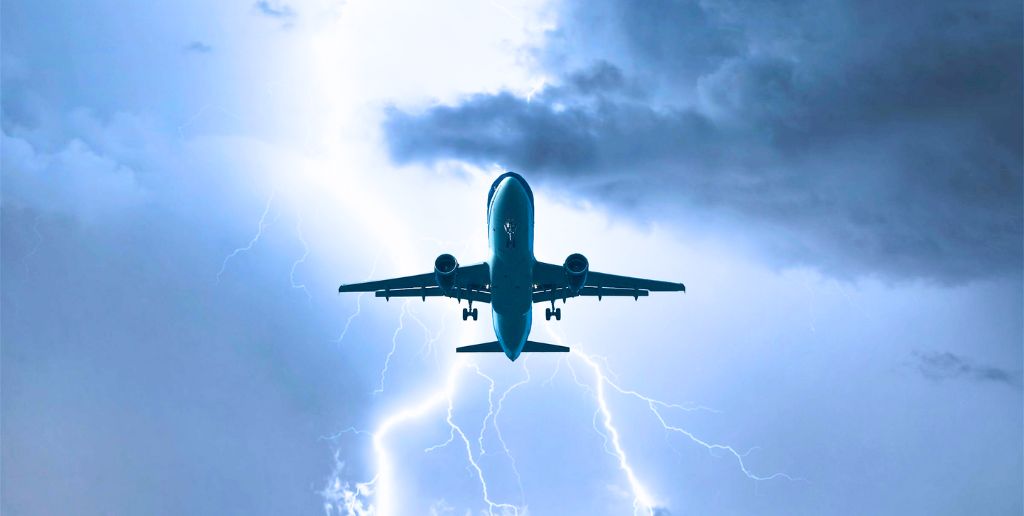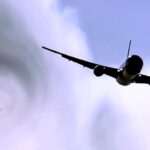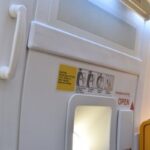If you are a flight traveler, you must be aware of the 1966 BOAC Flight 911 turbulence incident. It is one of the worst or most fatal aircraft turbulence incidents in aviation history. The incident resulted in the death of all on board, 124 people (113 passengers+11 crew members). The sightseeing detour turned into a nightmare when the aircraft entered a region of extremely severe clear-air disturbance near Mount Fuji, Japan.
So, the relationship between aircrafts and turbulence is not a new one. Are you thinking, what is Turbulence on Plane, and why does it occur? How fatal can a disruption turn? There must be a number of questions going through your mind after reading about the above incident. Do not worry! We are going to cover everything you should know about Atmoshpheric disturbance as a flyer. This blog is going to provide a comprehensive answer to this question.
Thus, go through the whole blog to understand everything about Turbulence on Plane and stay prepared whenever you have your next flight.

What is Turbulence?
Turbulence is the effect of irregular air currents around the plane. It refers to a sudden jolting when the aircraft is in motion. Generally, it only causes you to have a shaking or bumping ride while traveling on the plane. This means that the plan will be motion upwards and downwards, giving you bumps, but will continue to move forward toward its destination. It can move the plane while bringing a difference in height. While it may seem normal, the severity of this phenomenon, which occurs due to the motion of air, can be severe. It can result in negative and unprecedented consequences, as we have learned in the example given in the Introduction section. The following are some of the atmospheric phenomena that result in commotion in plane:
- Jet streams (fast-flowing air currents at high altitudes)
- Thunderstorms and convective activity
- Mountain waves (airflow over terrain)
- Frontal boundaries (where warm and cold air masses meet)
- Clear Air Turbulence (CAT) – invisible, occurring in cloudless regions, making it impossible to detect visually or by radar.
Reasons for Airplane Turbulence on Plane?
Just going through the definition of Turbulence will not help you. Let’s understand what causes Airplane Turbulence. Turbulence can differ from one another in nature.
So, in aviation, when you ask is turbulence normal? It is. But what causes it? Let’s learn about it, along with learning about two major categories of disturbance in plane:
Types of Turbulence:
There are two key variations when it comes to Turbulence on plane:
- Turbulences in the Cloud: Most of the Turbulence incidents fall into this category. The presence of up- and downdrafts of wind in the clouds causes the aircraft to have a bumpy motion. Most of these incidents are mild, cites the BBC. But bigger clouds can result in moderate or even severe cases of Turbulence.
- Clear Air Turbulence: With its name, it is clear that there is no cloud in this type of Turbulence. This is caused by erratic wind movement. In simple words, when it comes to what causes airplane turbulence, the answer is the presence of bumpy air around the plane without a single cloud or storm. This kind of Turbulence is more problematic for detection as it can occur even when the sky looks perfectly clear.
How Dangerous is Airplane Turbulence?
When it comes to the question: are Turbulences really dangerous, a direct answer is No. According to Mr. Gratton, associate professor of aviation and the environment at Cranfield University, Aircraft are designed to tolerate the worst circumstances a Turbulent environment can bring.
However, pilots try to avoid Turbulence to avoid any casualties.
The BBC says that, according to aviation experts, extreme scenarios of Turbulence can result in structural damage to the plane. Severe Agitation can be so strong that it can throw a passenger across the cabin who is not wearing a seat belt.
When it comes to how dangerous Turbulence generally is, it is not that dangerous. According to the BBC, there can be injuries but death as a result of Agitation is rare. The news giant says that though there are no official figures, it counts roughly four deaths as a result of the turbulence since 1981. So, for people who think, can turbulence bring down a plane? The answer is no.
The Federal Aviation Administration (FAA) says that for on-board people not wearing seatbelts, Turbulence is the most common cause of in-flight injuries.
Safety Measurements to Avoid the Worst Effects of Turbulence on Plane
We have learned that flight Turbulence is not that dangerous. Thus, when it comes to can turbulence bring down a plane, it is a no. However, following safety measurements is important. The following are some of the things passengers should keep in mind:
- Wearing Seat Belts: While the nature of Turbulence is unpredictable, pilots generally advice passengers to wear seat belts almost all the time. According to the Federal Aviation Administration (FAA) and International Air Transport Association (IATA), it is the sole most effective protection against the injuries Turbulence can cause.
- Seat Choice: According to SimpleFlying, if you have chosen the back seats of the aircraft, you will experience the worst Aircraft Turbulence. So, if you have the question: is there more Instability in the back of the plane, on your mind, the answer is, Yes. It is worse than those sitting over the wings or in the front. Thus, the best place to sit on a plane is toward the front. If you choose window seats, you can cope with the bumps in a better way. Opposite to this, the aisle seats put you at risk of hitting carts.
- Prioritize the Cabin Crew Instructions: Whenever the crew members ask you to tighten your seatbelts or return to your seats, or secure your belongings, prioritize these instructions. The crew members know everything about how much turbulence can a plane handle. Thus, it is important to follow their instruction.
- Stow and Secure Loose Items: For the safety of your personal belongings, it is a good idea to under the seat or in overhead bins securely. This way, you can protect your laptops, bags, and other items during Turbulence. Ensure that you keep hot drinks, glass bottles, and electronics stored during turbulence. This helps you to protect yourself from burns or injuries.
- Plane size: If you are wondering does plane size also affects your experience during Turbulence, it is a yes. Turbulence has its intensity on smaller planes. The reason why larger planes are the best choice against Turbulence on plane is that they hold more mass and inertia. It helps them cut through the Disruption more smoothly. So, you now have your answer to the question: Do bigger planes have less turbulence?
- Altitude Risk: Two-thirds of the Turbulence-related accidents occur when the plane is above 30,000 feet, often due to unexpected Clear Air Disruption.
What Do Passengers Feel About Turbulence?
When it comes to the passenger experience of Turbulence, it is worse. Passengers describe the sensations occurring due to Turbulence as sudden drops, shaking similar to driving on a rough road, or an Uneasy “floating” feeling during microgravity moments. According to the studies of the University of Reading (2022), it is only the fear of turbulence that causes over 40% of flight anxiety cases, while Turbulence itself results in minimal risk. So, avoid choosing the airlines emergency seats that are toward the tail of the plane. Because when you ask where do you feel the most turbulence on a plane, it is the back part of the plane.
According to Frequent Flyers, we can decode the relationship of the planes and turbulence as “uncomfortable but routine”. The following are some of the psychological perceptions of travelers about Turbulence:
- Passengers say that mild turbulence feels like light bumps.
- When the turbulence is moderate, you may spill your drink or find it difficult to walk.
- Severe Turbulence is considered rare. Though it can toss unsecured items or cause
- The difference of several hundred feet in the altitude change in an instant.
Conclusion:
Concluding the blog, we come to the point that the word aircraft turbulence may seem terrible, but it is a thing of routine for aviation experts and pilots. The reason is that it is an atmospheric phenomenon caused by the rapid movement of air, beyond human control. Factors like jet streams, thunderstorms, mountain waves, and clear air currents are some of the key reasons for Turbulence. While most of the sources cite that death as a casualty of Turbulence is rare, the 1966 BOAC Flight 911 crash near Mount Fuji is an example of one of the deadliest turbulence.
When it comes to the understanding of the passengers about Turbulence, it is completely different from that of pilots. From the point of view of passengers, Disruption in the air is worse. But this point of view makes their navigation through the situation tough. This psychological perception of the passenger causes over 40% of flight anxiety cases, however, Turbulence is not that terrible in real. So, when you ask where do you feel the most turbulence on a plane, it is the back. So, prefer choosing yourself a seat toward the front of the plane.
To cope with Turbulence, keeping them tied to the seatbelts is one of the strongest advice of aviation experts to passengers. Furthermore, they should also emphasize listening to the crew, making the best seat choice, and analyzing plane size. Additionally, when you ask how much turbulence can a plane handle, today’s aircraft are designed to bear far more turbulence.
FAQs:
Ans: Generally, it is a routine thing for the crew members and those who fly frequently. Thus, passengers should not fear turbulence.
Ans: Yes, bigger planes cut through the turbulence more smoothly.
Ans: Yes, turbulence is a normal thing in aviation.
Ans: Passengers can ensure their safety during turbulence in the following way:
Wear seatbelts all the time, listen to the crew instructions, and make the best seat choice.
Ans: When it comes to choosing the best seat for Turbulence, it is the front of the plane.
Ans: No, it can not crash a modern plane.
Ans: Yes, there is more turbulence in the back of the plane.










0 Comments